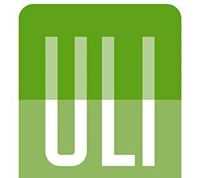USICH Releases Additional Information, Detailed Framework to End Youth Homelessness
WASHINGTON, D.C. – February 21, 2013 – (RealEstateRama) — Today, as hundreds of advocates and service providers for youth experiencing homelessness gather in Seattle, WA for the National Conference on Ending Family and Youth Homelessness, USICH releases the USICH Framework to End Youth Homelessness: A Resource Text for Dialogue and Action (youth framework). As participants in this conference learn from and connect with one another on the best strategies and programs to end youth homelessness, we at USICH hope to ground the discussion with this important document for providers across the country. This federal framework for tackling the problem of youth homelessness sets forth the vision for how we should proceed in this important work, building off of the 2012 Amendment to Opening Doors.
Go to the USICH Framework to End Youth Homelessness page
When Opening Doors was launched it set the ambitious goal to prevent and end youth homelessness by 2020, a goal that was strengthened with clearer strategies outlined in the 2012 Amendment to Opening Doors. The Amendment outlined that in order to meet this goal, we must gain a better understanding of the nature and extent of youth homelessness and build our homeless services system to better meet the needs of unaccompanied youth experiencing homelessness. Introduced to the Council in June 2012 and available today to the public in greater detail, the youth framework sets a path for states, communities, and public and private stakeholders to work together on a strategic approach to getting to better youth outcomes in stable housing, permanent connections, education/employment, and well being.
The youth framework outlines strategies to improve our understanding of youth homelessness by getting better data and building the capacity of programs to effectively serve youth experiencing homelessness. The framework also includes a preliminary intervention model that looks at youth through the lens of risk and protective factors, focusing particularly on high-risk populations such as youth involved in the foster care or juvenile justice systems, LGBTQ youth, and pregnant and parenting youth. Ultimately, ending youth homelessness requires a collaborative, systemic approach-federally and locally-that includes targeted homeless assistance and mainstream systems. This framework is a positive step forward in our collaborative work to understand the scope and interventions necessary to end youth homelessness. USICH and our federal partners hope that this document continues the rich dialogue about what we all must do to meet the needs of unaccompanied youth experiencing homelessness.
















